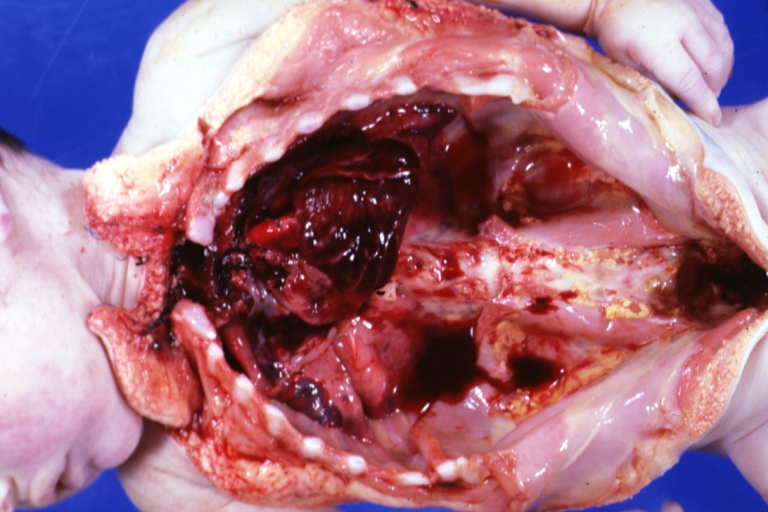Aortic arch anomalies pathophysiology
|
Aortic arch anomalies Microchapters |
|
Diagnosis |
|---|
|
Treatment |
|
Case Studies |
|
Aortic arch anomalies pathophysiology On the Web |
|
American Roentgen Ray Society Images of Aortic arch anomalies pathophysiology |
|
Risk calculators and risk factors for Aortic arch anomalies pathophysiology |
Editor-In-Chief: C. Michael Gibson, M.S., M.D. [1]
Associate Editor-In-Chief: Cafer Zorkun, M.D., Ph.D. [2] Keri Shafer, M.D. [3] Priyamvada Singh, MBBS [[4]]
Assistant Editor-In-Chief: Kristin Feeney, B.S. [[5]]
Overview
Pathophysiology
Vascular rings encircle the trachea and esophagus, which results in variable degrees of compression of both structures. Compression of the trachea causes upper airway obstruction that impairs airflow. The extent of airway compression is variable. Double aortic arch is more often associated airway compression and is also associated with more severe airway compression than other forms of vascular ring.
Gross Pathology
-
Hemorrhagic Necrosis; Massive, Postoperative: Gross; natural color, heart, in situ, a 2 day old infant, operative death, interrupted aortic arch and VSD (Image courtesy of Professor Peter Anderson DVM PhD and published with permission © PEIR, University of Alabama at Birmingham, Department of Pathology)
Genetics
Double Aortic Arch
Double aortic arch is associated with a chromosome band 22q11 deletion in approximately 20% of patients. Double aortic arch may be associated with band 22q11 deletion, which has various other possible manifestations. These include, but are not limited to, palatal abnormalities, laryngotracheal anomalies, speech and learning delay, characteristic facial features, hypocalcemia, abnormalities of T-cell–mediated immune function, and neurologic defects.
